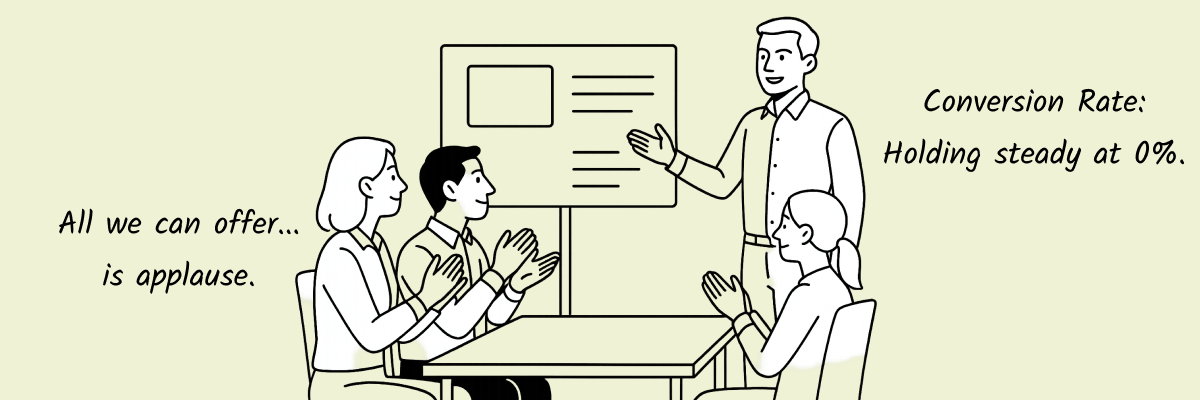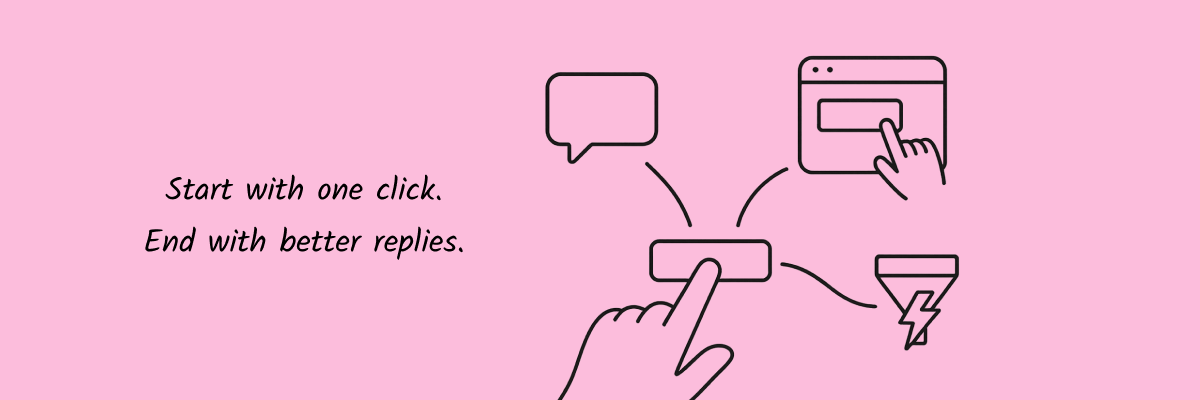“We made our product demo super detailed. Every client says it's great—just no conversions.🤔”
Sound familiar? We’ve seen it happen, and we’ve been there ourselves.
The product demo goes smoothly. The prospect looks genuinely interested, nodding along, even asking a few deeper questions. You wrap it up by patiently answering everything, and they politely respond with: “We’ll evaluate internally and get back to you soon.”
Then comes the wait.
🕐You follow up once—still discussing.
😐Follow up again—they say next week.
💨Eventually, it just fades out.
It’s one of the most familiar (and frustrating) moments for sales teams. You know they’re interested, but somehow, things aren’t moving forward.
Is it the demo content? Is it unclear budget?
Or—have we simply not given prospects a chance to truly experience the product for themselves?
Over the past few years working with B2B teams (and being in one ourselves), we’ve come to a growing realization:
The traditional product demo process just doesn’t convert the way we think it should.

From Presentation to Co-Creation: Why Interactive Sales Tools Matter
In modern sales, the product demo is often the first real touchpoint for decision-makers. And whether that brief moment builds trust—or just leads to another meeting—can shape the entire sales outcome.
Traditional demos still rely heavily on PowerPoints, screen recordings, or scripted walkthroughs. These static formats can be informative—but they rarely engage. The presenter drives the pace, walking through the features, structure, and benefits. Meanwhile, even the most attentive prospects stay in the role of a passive observer.
But sales isn’t about “showing” a product—it’s about guiding someone to personally recognize its value.
That’s where interactive sales tools come in.
Instead of watching a walkthrough, prospects “walk through it” themselves—clicking, typing, triggering real actions. In a way, they’re getting a preview of what using the product after purchase would feel like.
77% of B2B buyers prefer self-service product research before ever speaking with sales. By 2025, 80% of B2B sales interactions are expected to take place through digital channels.
Interactivity changes everything. Once prospects start clicking, they’ve already taken the first step toward co-creating value—not just consuming a pitch.
And that shift is where sales conversion starts to take shape.
Why Interactive Product Demos Drive Higher Conversions
1. From Explaining Value to Letting Prospects Experience It
We retain more and understand better when we do it ourselves.
Imagine you’re evaluating a photo editing app. Hearing about its auto-enhance features and fast exports is one thing. But being able to upload a photo and try it for yourself? That’s a completely different kind of persuasion.
Prospects trust their own experience more than any feature list. That moment when they feel a problem being solved—that’s what makes a solution stick.
👉 A hands-on interactive demo that sparks an “aha” moment will always beat a ten-minute explanation.
That’s how you turn abstract product value into something tangible.

2. The Real Barrier to Conversion? Uncertainty.
One of the biggest blockers in B2B sales conversion is uncertainty.
-🤔Is this tool really going to solve our problem?
-😟Will it be hard to use?
-💰Is it worth the price?
Interactive sales tools give prospects a no-risk way to explore and validate the solution.
- Not sure if it’s easy to use? Let them try it.🧑💻
- Curious about pricing? Let them explore it directly.💵
- Wondering if it fits their workflow? Let them simulate a real use case.🔄
When prospects can map your product to their own pain points, the friction in the sales process naturally decreases.
3. Shortening the Path from Interest to Action
Even a great product can get stuck if it’s “look, don’t touch.”
After a traditional demo, the client often needs to go back and get internal buy-in—convince the boss, secure budget, request a test account...
And at every step, interest can fade.
Interactive demos help bridge this “cooling-off” period.
After a sales call, prospects can easily share the demo link with teammates, allowing others to walk through the same product experience. And because these demos are quick to build—no coding or engineering support required—even sales or product teams can tweak and resend a new version anytime.
That means no engineering bottlenecks, no scheduling, and no need for a sales rep to walk everyone through it.
This kind of scalable, self-serve reusability gives your sales motion a serious boost.

4. Making It Easier for Prospects to Champion Your Product
The longer the buying process, the more important it is to equip internal champions.
Many prospects want to advocate for your product—but if they don’t fully understand it themselves, it’s hard to persuade others.
Interactive demos lower that barrier. Now, a prospect doesn’t need to explain every detail—they can just say:
"Here, try it yourself."
A demo is no longer a one-time meeting artifact. It becomes a shareable invitation to explore.
A Demo Isn’t Just a Substitute—It’s a Sales Accelerator
Many teams adopt interactive demos just to make product presentations more engaging.
But once they start using them, they realize something bigger:
These tools aren’t just substitutes.
They’re a new sales rhythm.
Examples we’ve seen:
- SDRs see better reply rates when they include an “interactive product link” in cold emails.
- User onboarding improves when new customers can click through a hands-on demo.
- MQL-to-SQL conversion speeds up when prospects get a no-signup experience preview.
Interactive sales tools are quietly reshaping how sales works.
They take some of the pressure off your reps—and let the product speak for itself.

A Final Thought
Every demo is an invitation to trust.
If it’s just about presenting, listing, and pitching, it might grab attention.
But if it becomes a journey of exploration and understanding, it reaches something deeper: a decision.
Our hope is to make sales feel more like an invitation to discover value together.
And interaction? It’s just one way we’ve found that works.
If You’re Looking for a Tool Like This
Sometimes, the product is already strong—you just need a better way to let customers feel how good it is.
If you’re looking for a simple, flexible, and shareable way to build interactive product demos, Snapdemo might be a good fit.
It’s free to try, no credit card needed, and you can collaborate with your team to build and update demos anytime—no coding required. Let your prospects click through the experience and discover your product’s value in just a few minutes.
For teams who want to improve their demos and speed up the sales cycle,
interactive demos are no longer a “nice-to-have”—they’re becoming the new standard.

